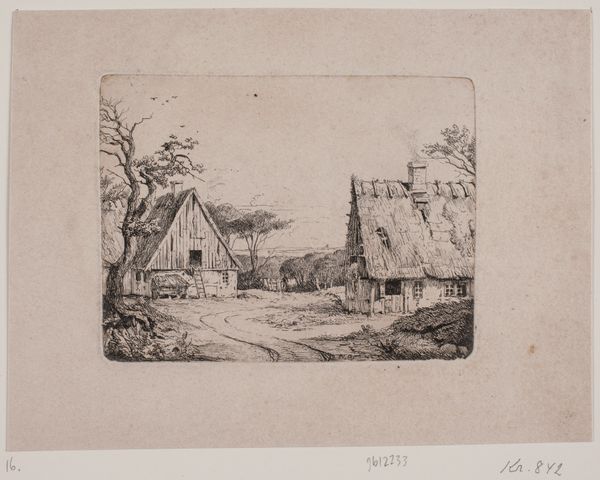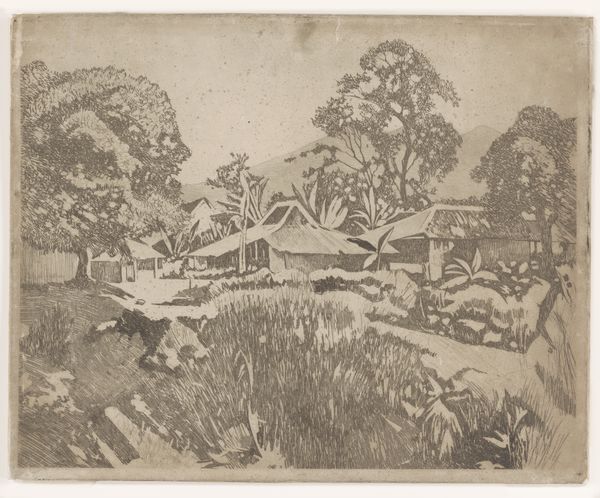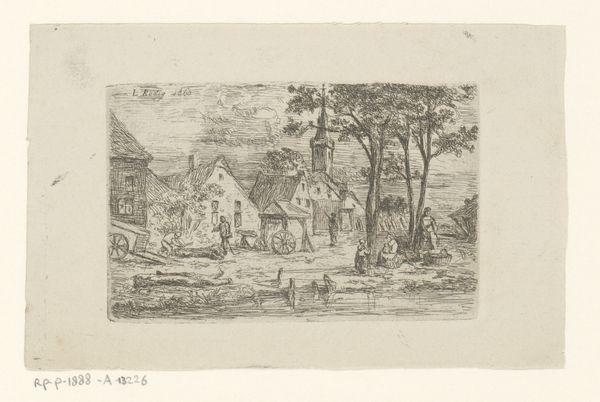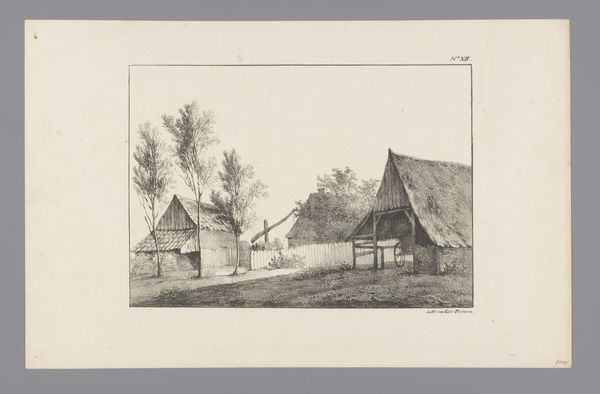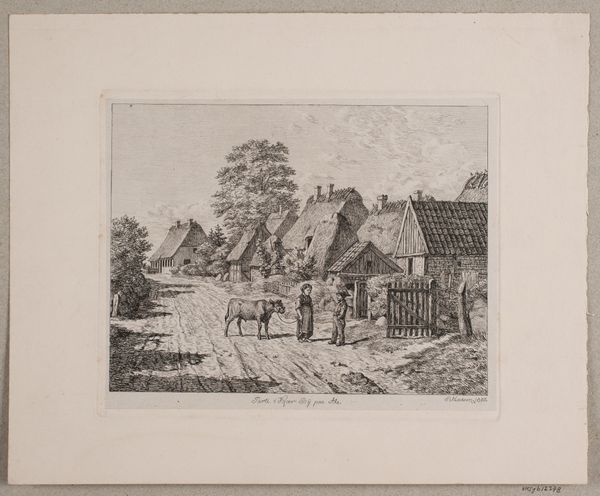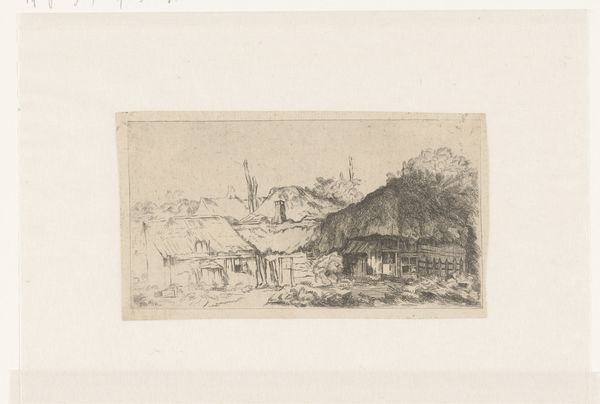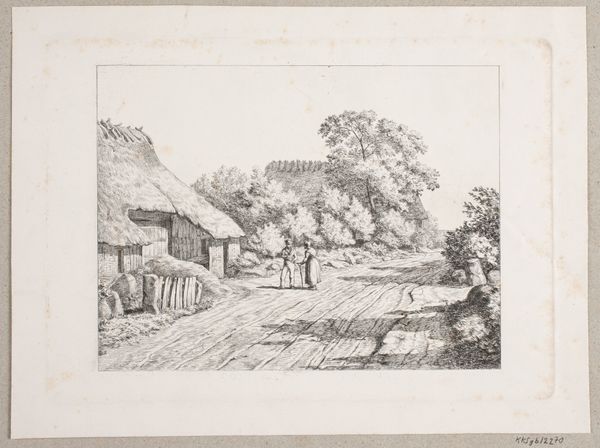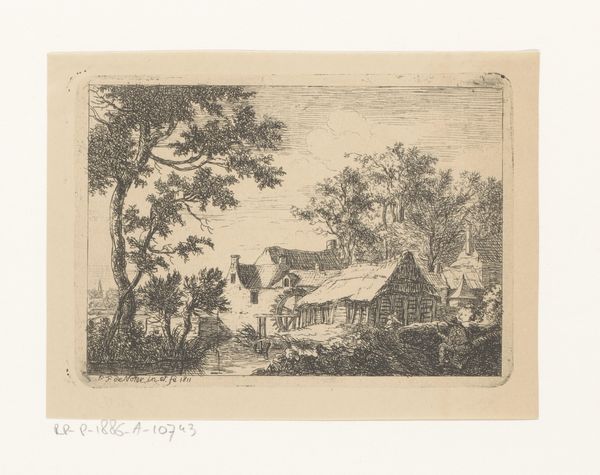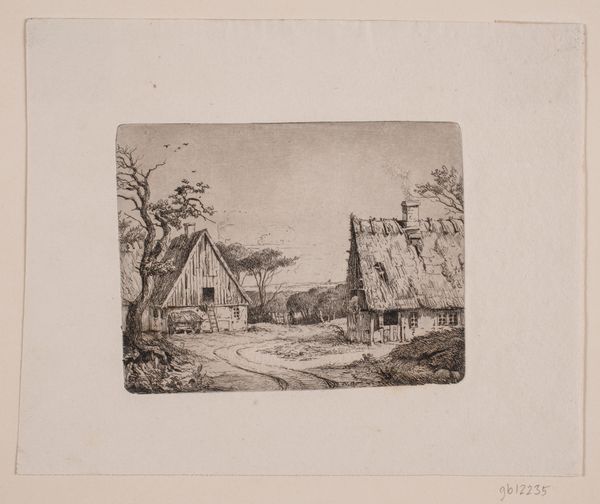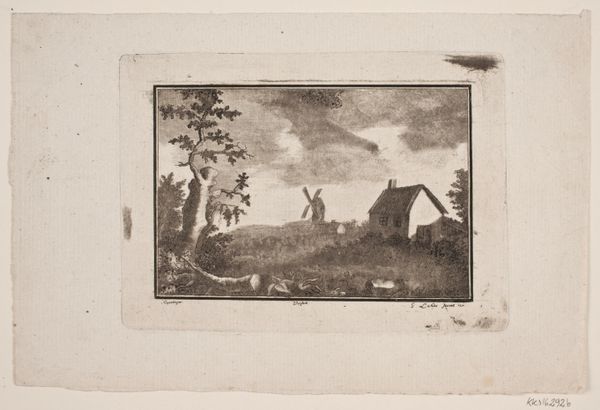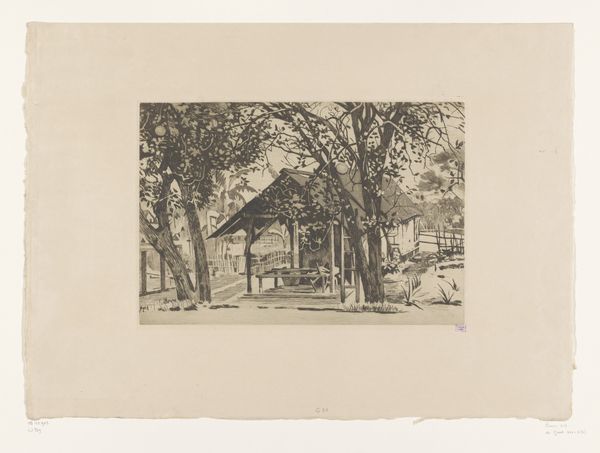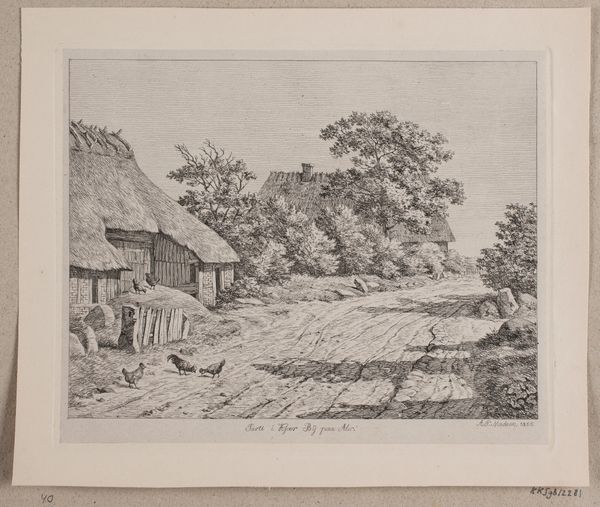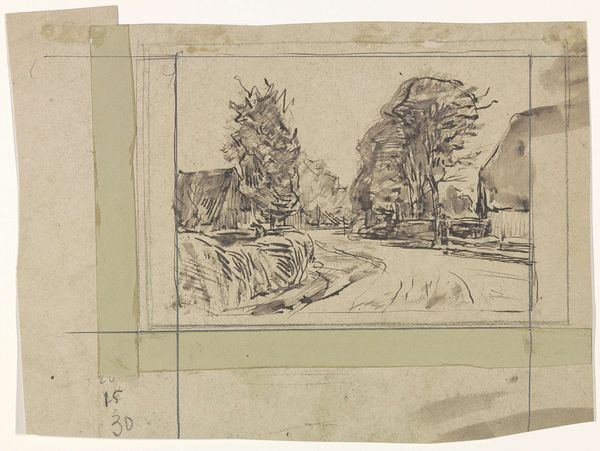
print, etching
#
dutch-golden-age
# print
#
etching
#
landscape
#
etching
#
realism
Dimensions: height 342 mm, width 411 mm
Copyright: Rijks Museum: Open Domain
Curator: This etching by Willem Witsen, dating back to approximately 1921, captures a tranquil scene on the Gambar plantation in Java; it's titled "Bijgebouw met drogende was op de plantage Gambar te Java." Editor: It evokes a feeling of hazy stillness, doesn't it? The subtle gradations of light achieved through etching create this really interesting flattened, almost dreamlike space. It has a wonderfully informal composition, though I admit I don't love how close the image is cropped in at the margins of the paper. Curator: It's tempting to see those drying linens as symbols of domesticity in this exotic locale. We know colonial enterprises often intertwined ideals of civilization with resource extraction, so there is potentially a layered reading here, don't you think? The linens signal a type of orderly living imposed onto this plantation setting. Editor: I find that reading plausible, but I am mostly struck by Witsen's control of the medium. Notice how he's used varied line weights to describe the foreground vegetation in contrast to the fading lines that suggest depth into the landscape. The buildings, drawn with relatively precise detail, anchor the space and define an open courtyard, almost like a stage. Curator: Right. It speaks to a kind of psychological framing. What appears simple is rather complex; the scene reflects a lived reality of those that inhabited, willingly or not, this place, Java, carrying memories and experiences now imprinted into the art. The linens themselves seem like a signal – a semaphore almost, coded in a domestic tongue of lives and experience. Editor: That resonates, actually, if we examine the light itself. Notice how uniform it is across the whole composition—no strong shadows anywhere, which flattens and unifies foreground and background and reinforces the dream-like character of the print, the equal dignity and import the etching technique gives to laundry and workers. Curator: So the light acts, almost, as a stage upon which the play of domesticity, nature, and the history that tethers all those parts comes to light? The simple scene becomes almost an imprint, an emotional residue in time. Editor: Precisely. Considering it from a purely formal perspective does underscore how even seemingly simple prints can evoke surprisingly complex and multi-layered responses. The quiet strength here is Witsen’s keen eye and etching skills. Curator: Absolutely. Thank you for lending me your critical eye on it. I, in turn, have been pushed to expand on how seemingly bucolic images carry untold weight and complex emotional implications.
Comments
No comments
Be the first to comment and join the conversation on the ultimate creative platform.
